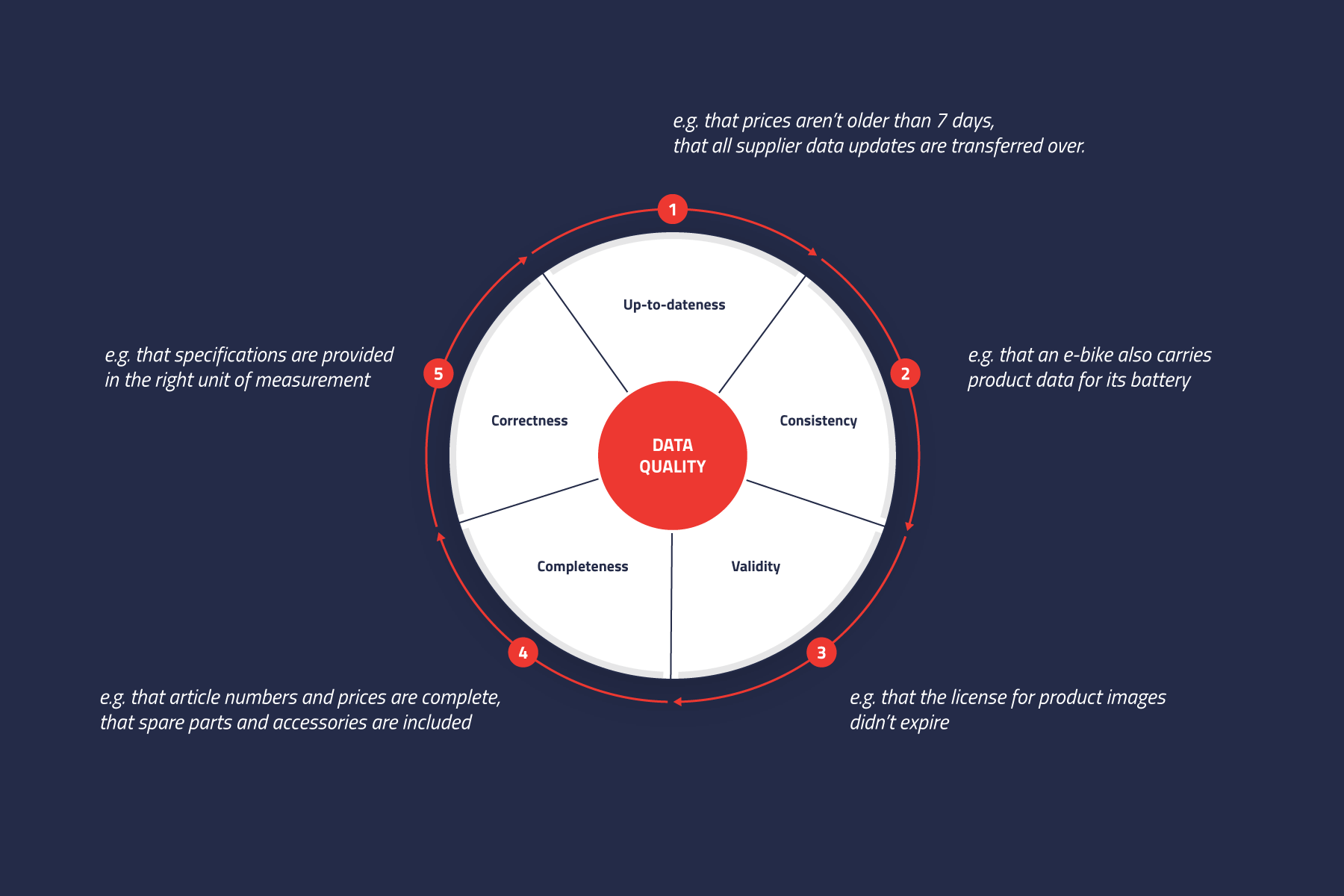Product Information Management
Data Cleaning – The Path to Optimal Product Data Quality

Content
Towards Success with Good Product Data Quality
The trend of data quality is gathering momentum – it’s a topic which is gaining in significance in the industries. Companies talk a lot about improving the quality of their data. The implementation of quality assurance, however, often turns out to pose quite a challenge as an unpleasant time-consumer, which is why the topic quickly becomes a secondary side issue relative to daily business. In turn, what’s underestimated here is the direct correlation between high data quality and corporate success. In this article, we demonstrate to you what constitutes good data quality and how you can go about improving the quality of your product data in a few basic steps.
Why is the Quality of Your Product Data so Crucial?
Bad quality of product data, which can be traced back to wrong or incomplete information, translates into significant costs for a company. To use Germany as a point of reference, every sixth order is returned to the retailer, including causes such as misguiding product descriptions. This amounts to a net loss of 5 billion euro a year. (Source: welt.de)
Once a customer makes a bad purchasing experience, she loses her trust in the brand and is more likely to not commit to a second purchase from the same retailer. The time factor is not to be underestimated. Customers invest a lot of time to search for products and corresponding information online. Missing and incorrect data leaves a dent in your credibility which, in turn, hinders the conversion of new customers.
At the same time, the impact of insufficient data quality on the intra-corporate level is not to be dismissed either. Employees are investing a lot of effort into data collection and validation. Additionally, there is usually no clear and distinct definition of what makes for good data quality. The lack of a concept causes longer decision-making paths which, in turn, presuppose smooth coordination and management of multiple company departments. In the long run, this will take a toll on the satisfaction rate of employees.
Good product data quality, in contrast, boosts corporate success and increases not only sales but also your customer’s trust in the company. While costs go down, the satisfaction rate rises given that the product return rate is well regulated and related efforts are reduced to the minimum.
What Makes for Good Product Quality?
Good data quality is defined by five criteria.
1. Up-to-dateness
Your data reflects the current state of things. All updates, e.g. by suppliers, are included and all price tags are reliable.
2. Consistency
Your product data is free of contradictions and is uniform.
3. Validity
Your product data is valid. For example, the license for product images hasn’t expired.
4. Completeness
Your product offer provides all necessary product attributes and all relevant information is well-maintained. Besides prices, descriptions, measures, and images, this also includes accessories or spare parts.
5. Correctness
Your product data is is adequate to reality. Measures, for example, are listed with the right unit.
How can You Increase the Quality of Your Company’s Product Data?
Before you approach the topic of improving data quality, you should first get a clear-cut picture of the communicative goals of your company. First, define the recipient of your data. Think about where relevant information will be presented and what requirements the target platforms entail. A typical audience includes online channels and print outlets. Because of limited space, product information has to be short and concise when printed on flyers or datasheets; there’s simply no room for many images and long product descriptions. To the contrary, online channels provide sufficient space for extensive information; here, the name of the game is: the more, the better.
In the next step, map out the target groups to which you want to reach out. Define a target-group-specific approach and concentrate on the requirements at hand.
On the basis of this intel, you can define measurement criteria from which you can, in turn, derive data quality rules. A PIM supports you in both defining and monitoring such rules. Once set up, quality assurance comes into effect as early as in the data collection cycles. This way, you keep an overview of the state of all your product data at a glance from the get-go. Your starting point for quality improvements are corrections and additions to relevant data records. The PIM system will help you to distribute high-quality content to the right channels at the right time. Automated processes guarantee that you’ll reach your target groups and become even more efficient. With a centralized data pool, all manual processes, long data-related research, and tedious decision-making hierarchies fall flat. In the middle-to-long run, you’ll achieve data optimization and save both time and resources.
All in all, we can draw the conclusion that efficient Data Quality Management isn’t possible without a PIM system. Start as early as today with the optimization of your product data and make a strong contribution to sustainable corporate success!
Ready to elevate your product data quality to the next level?
Then we have just the right thing for you: Our checklist for optimal product data quality. With these practice-centered guidelines, you’ll bring your product data into top form in virtually no time.
From Our Blog
You may also be interested in the following articles








